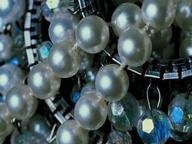
All I Want For Christmas Is...Part 2! Quiz
Let's Brooch the Subject!
..a brooch! Experts agree that styles in brooches are chronological indicators as they changed with different historical periods, so if you're up to stuff with your history, sorting the brooches by era should be a breeze!
An ordering quiz
by ponycargirl.
Estimated time: 3 mins.